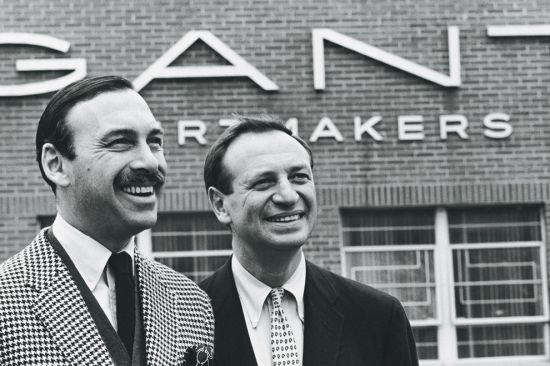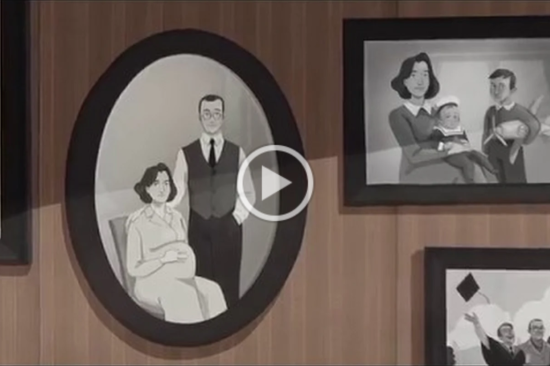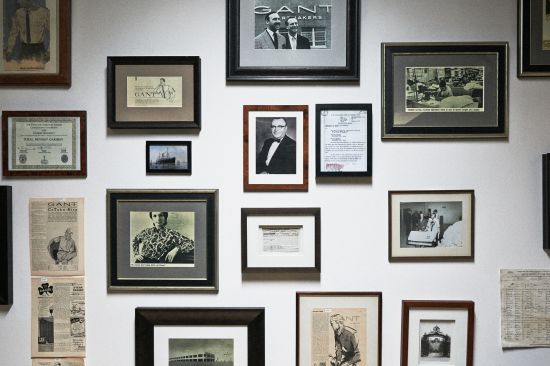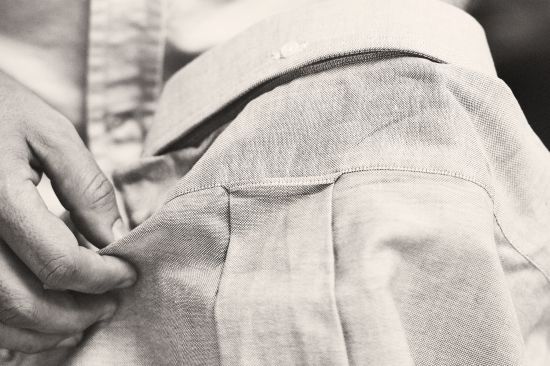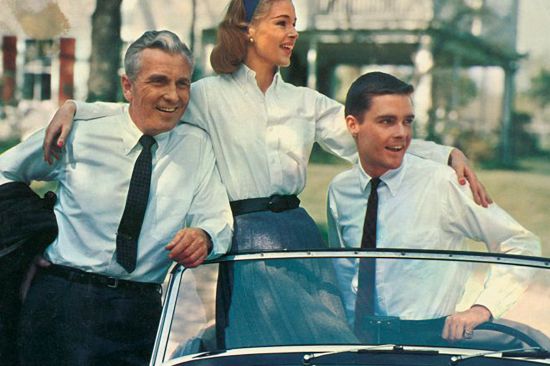LATA 1949–1959
DOTARCIE DO WŁAŚCIWEGO KLIENTA
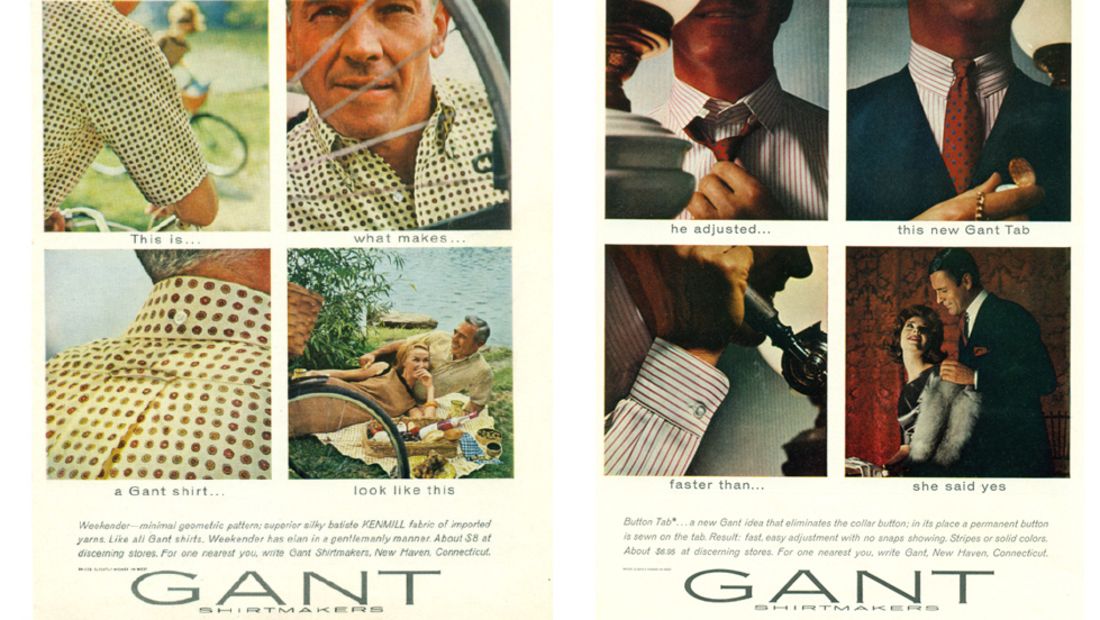
Marty i Elliot podkreślali, że produkty marki GANT muszą charakteryzować się najwyższą jakością. Bracia rozumieli rodzinny interes. Utożsamiali się z nim tak bardzo, że zmienili nawet swoje własne nazwisko z Gantmacher na Gant. Rozumieli też siłę reklamy. Chcieli, aby ich produkty były zawsze widoczne we właściwych miejscach. Oznaczało to sprzedaż wyrobów marki tylko w najlepszych sklepach w mieście i zamieszczanie reklam w tygodniku The New Yorker.
Pierwszy numer magazynu The New Yorker ukazał się w lutym 1925 roku. Jego okładkę zdobił rysunek dandysa trzymającego w dłoni monokl. Był to nowy rodzajtygodnika, który przyciągał nowy rodzaj czytelników.
„The New Yorker będzie magazynem, który nie jest redagowany dla starszej pani z miasteczka Dubuque”, pisał Harold Ross, pierwszy redaktor tygodnika. „To pismo, które nie będzie się zastanawiać, o czym ta pani aktualnie myśli. Nie obrażając nikogo, The New Yorker to magazyn otwarcie przeznaczony dla mieszkańców metropolii”.
Tygodnik przyciągał najlepszych i najbardziej dowcipnych pisarzy, od J.D. Salingera i Vladimira Nabokova po Dorothy Parker i F. Scotta Fitzgeralda wraz z żoną, Zeldą. Redakcja była wybredna nie tylko w zakresie autorów, z którymi współpracowała, ale również w zakresie reklam, które trafiały do publikacji. Odrzucano reklamy, które nie pasowały do tonu magazynu.
Jednym z przedsiębiorstw, które odnalazły się w tej nowej estetyce, była firma GANT. Początkowo Marty i Elliot mogli sobie pozwolić jedynie na czarno-białe reklamy zajmujące jedną ósmą strony, umieszczane na łamach magazynu raz na trzy miesiące. Stopniowo firma inwestowała w coraz większe i częściej publikowane reklamy, które przedstawiały koszulę oxford na czterech różnych zdjęciach i w czterech różnych sytuacjach. Kulminacją było wykupienie ośmiu w pełni kolorowych reklam w ciągu jednego roku. Kampania pokazywała, że firma GANT produkowała koszule, które nosili wyrafinowani, inteligentni młodzi ludzie.
SPIS TREŚCI TEGO WYDANIA
GANT to marka kierująca się prostą zasadą: nigdy nie przestawaj się uczyć. To przekonanie przyświeca nam od 1949 roku, kiedy to Bernard Gantmacher założył w mieście uniwersyteckim New Haven w stanie Connecticut firmę produkującą koszule.
DOWIEDZ SIĘ WIĘCEJIstnienie marki GANT rozpoczęło się od koszuli i firma nigdy nie przestała stwarzać jej na nowo. To koszula urodzona w 1949 roku, o bogatym dziedzictwie i historii.
DOWIEDZ SIĘ WIĘCEJHistoria firmy GANT zaczyna się od ukraińskiego chłopca, który w poszukiwaniu lepszego życia przypłynął do Ameryki, zakochał się, osiągnął sukces i na zawsze odmienił amerykański styl ubioru.
DOWIEDZ SIĘ WIĘCEJOdkryj wczesny, obfitujący w wydarzenia okres działalności firmy GANT – od 1907 do 1968 roku.
DOWIEDZ SIĘ WIĘCEJZachęcony przez swoich synów, Bernard Gantmacher zakłada firmę GANT Inc. i rozpoczyna produkcję koszul pod własną marką.
DOWIEDZ SIĘ WIĘCEJW latach 50. XX wieku dominującym kolorem męskiej koszuli jest biel – aż do momentu stworzenia przez firmę GANT nowego, śmiałego stylu, który zapoczątkował Oxford Color Explosion.
DOWIEDZ SIĘ WIĘCEJOdkryj, jak dyskretne logo G, umieszczone u dołu koszuli, stało się częścią historii amerykańskiej mody męskiej.
DOWIEDZ SIĘ WIĘCEJPozostając pod wpływem miasta New Haven w stanie Connecticut i pobliskiego Uniwersytetu Yale, firma GANT odgrywa główną rolę w kształtowaniu stylu Ivy League Look.
DOWIEDZ SIĘ WIĘCEJIdealne wywinięcie kołnierzyka, pętelka z tyłu koszuli, kontrafałda, guzik z tyłu kołnierzyka i patka zapinana na guzik. Firma, która chce wyprzedzać konkurencję, musi stawiać na innowacyjność.
DOWIEDZ SIĘ WIĘCEJW sklepie Yale Co-op znajdującym się na terenie kampusu, koszula marki GANT w mgnieniu oka staje się prawdziwą sensacją.
DOWIEDZ SIĘ WIĘCEJOd stylu Ivy League Look po amerykańską odzież sportową, marka GANT pomaga zdefiniować styl charakteryzujący się jednocześnie swobodą i elegancją.
DOWIEDZ SIĘ WIĘCEJ
